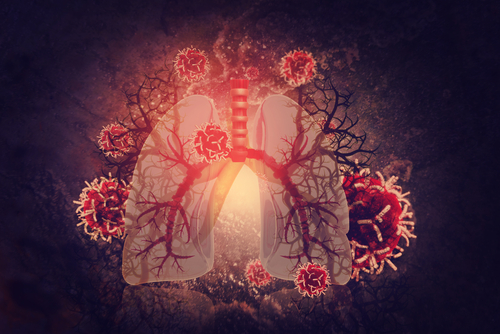Alterations in Blood Vessels of the Lungs Should be Monitored in SCD Patients, Study Says

Alterations in the lungs’ network of blood vessels, caused by sickle cell disease (SCD), reflect disease burden and should be carefully monitored over time, a recent study says.
The study with that finding, “Clinical relevance of pulmonary vasculature involvement in sickle cell disease,” was published in the British Journal of Haematology.
SCD is a rare genetic disorder caused by mutations in the HBB gene, which provides instructions to make hemoglobin, a protein responsible for oxygen transport in the blood.
In patients with SCD, the red blood cells have an abnormal sickle-like shape and tend to stick to each other, forming blood clots that block blood circulation. When these blockages occur and oxygen delivery is interrupted, patients may undergo vaso-occlusive crisis (VOC), the most common painful complication of SCD.
“Pulmonary complications are a significant cause of morbidity and death in SCD, including acute chest pain [acute chest syndrome], thrombotic disease [caused by a blood clot that blocks blood vessels’ circulation], pulmonary hypertension (PH), sleep disordered breathing and asthma/recurrent wheezing,” the investigators wrote.
However, very few studies have investigated how SCD affects patients’ lungs.
In this study, a group of researchers from the University of São Paulo in Brazil set out to evaluate the impact of SCD on the blood vessels of patients’ lungs.
The study focused on analyzing lung tissue samples from 30 SCD patients (18 men and 12 women), with a median age of 33 years, who had passed away from 1994 to 2012. Demographic, genetic and clinical data from all subjects also were analyzed.
To look for structural alterations in the arteries and veins of the lungs, researchers used a series of imaging techniques (e.g. immunofluorescence, immunohistochemistry and confocal microscopy) to visualize microscopic structures in great detail. Eight individuals who had passed away from heart disease, without lung disease, were used as controls for immunohistochemical analyses.
Autopsy and echocardiography patient reports were analyzed to assess the presence of heart abnormalities.
Results showed that 76% of the patients had structural alterations in the lungs’ arteries caused by high blood pressure. In addition, most patients (80%) showed signs of recent thrombosis events and fewer than half (43%) showed signs of old thrombosis events.
In addition, nearly a quarter (23%) of the patients had abnormal vein thickening and almost all (87%) showed signs of pulmonary capillary haemangiomatosis (PCH), a rare lung disease caused by the excessive proliferation of capillaries (small blood vessels) that can lead to PH.
Further analysis revealed that only 10% of the patients had an abnormally large right heart ventricle. The expression of markers of endothelial cells’ activation, including vascular cell adhesion molecule 1 (VCAM-1), intercellular adhesion molecule 1 (ICAM-1) and vascular endothelial growth factor (VEGF), were identical in lung samples from SCD patients and controls.
“In summary, in patients with SCD the whole lung vascular bed [blood vessels’ network] is affected by thrombotic events, arterial changes, venous remodeling and foci [regions] of PCH. These alterations reflect the multiple and different burden on lung vasculature imposed by SCD over time that should be considered during the course of the disease,” the scientists concluded.






